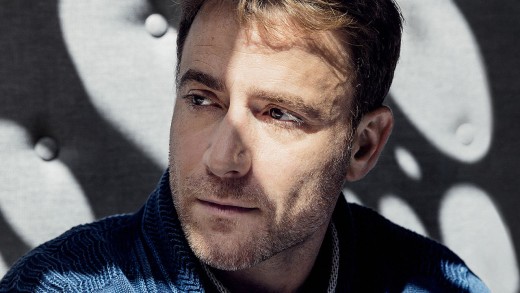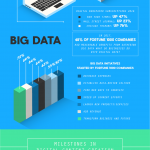Slack’s administrative center Revolution
With sharp design and a radically friendly sensibility, Stewart Butterfield’s place of job-conversation tool has everyone chatting.
September 15, 2015
In a conference room behind his Vancouver workplaces, earlier the intense faux-grass wall, based canopies masking a couple of assembly spaces, and a dozen busy young staffers standing in front of raised workstations, Stewart Butterfield is selecting at his takeout lunch from a local eastern joint, working thru a snappy historical past of eastern emigration to Vancouver that culminates in a passionate recommendation of his favorite yakitori spot. He especially loves their hen hearts. “they are to dark meat as dark meat is to chicken,” he says. “It’s simply extra severe.”
Butterfield—who runs the freshest business-device startup to come back alongside in, oh, perpetually—is a long way more philosophical, ruminative, and entertaining than your standard CEO. Over the course of two days, our discussions ramble thru themes such as recent academic philosophy, Phish, mergers and acquisitions, McDonald’s, the dilemma of constraints and prospects as reflected in instrument design and Christian Böokay’s Eunoia (a novel with 5 chapters, every of which uses a single vowel), constipation, Mark Zuckerberg, addictive intercourse, and librarians. And, yes, chook. “i’m suspicious of someone who prefers chicken,” he muses, grinning at his personal gall. “They’re self-deluded. It’s simply inconceivable to desire the feel or the flavor.”
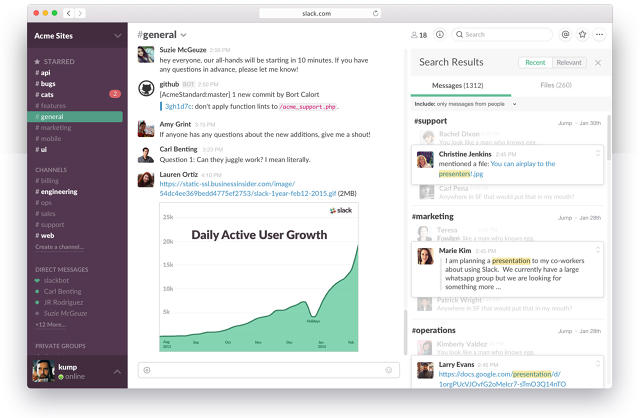
Butterfield feels the same way about Slack, his messaging/staff chat/report-sharing utility: it’s not possible for him to imagine someone preferring email or different traditional modes of workplace conversation. Launched in late 2013, Slack has already attracted 1.25 million day by day active customers at hundreds of firms, including Comcast, Dow Jones, Expedia, Blue Bottle coffee, Intuit, Zappos, and even NASA. in line with the corporate, 800 million Slack messages have been despatched in July—up from 290 million in January—and there are at present 10 occasions as many customers as there were a year ago. clients appear to seek out it more useful, engaging, and just simple enjoyable than any prior communication device. mission capitalists have referred to that zeal, backing Slack with $340 million (the corporate is at the moment valued at $2.8 billion). That’s a heck of a lot of money for a startup that’s just two years old, lacks a sales pressure, and is making an attempt to tackle Microsoft within the hypercompetitive marketplace for undertaking instrument. For all of its buzz, the company has an extended technique to go sooner than it poses a significant challenge to the business’s long-dominant avid gamers.
but when Slack continues to have this kind of impression, it might probably redefine the best way we communicate at work. the usage of the tool, much of an organization’s interaction takes place in full of life group-chat “channels,” which exchange these endless reply-all email chains which have turn into a bane of modern corporate life. To share one thing, you simply publish to the channel, moderately than CC’ing a select team. if you would like to alert anyone explicit, you could type her consumer title with an “@,” à la Twitter, or ship her a direct message. Slack syncs the whole lot across smartphones, tablets, laptops, and laptop computer systems which might be tied into that network.
The experience feels essentially completely different—extra latest, more in tune with individuals’s out-of-workplace digital lives—from what now we have skilled for twenty years, closer to social media than old skool electronic mail drudgery. Slack isn’t simply every other administrative center device: It’s a welcoming surroundings the place employees (just about) live. That’s an enormous shift, enabled by way of and hid within the app’s thoughtful, quiet, and welcoming design. Slack’s appear and interface aren’t showy. the whole lot seems natural, and the whole lot appears to work the way you’d are expecting it to. Slack is taking off not as a result of it screams its ambition to replace your current work tools, but for a more profound reason: It desires to be your friend.
The evening before our workplace lunch I meet Butterfield at Vij’s, a native Indian spot the place he has been a normal for the earlier sixteen years. Butterfield has spent most of his working life in Vancouver, just a three-hour drive from Microsoft’s headquarters in Redmond, Washington. The vibe at Vij’s displays the fact that tech hubs are rising in every single place the arena—there’s a feeling of younger, smart wealth here, but additionally a Canadian restraint that’s fairly completely different from Silicon Valley flash.

Butterfield has by no means adopted any glaring course to tech stardom, and that idiosyncratic trip is the most important to the Slack story. The device is an immediate reflection of the unique character that formed it. Butterfield was once born in the backwoods of Canada in 1973 to a hippie-ish mom and a draft-dodging father, who lived in a log cabin and named their baby boy Dharma Jeremy Butterfield. It wasn’t unless he used to be 12 that his oldsters, who with the aid of that time had made the psychic and literal move to town of Victoria, British Columbia, and had a hit careers in real property, let him legally alternate it to Stewart.
When he was 7 years old, Butterfield bought his first computer, and whereas he cherished taking part in video video games, he used to be hardly a traditional tech geek. In his studies he was drawn to philosophy, and at the U.ok.’s Clare college, Cambridge, he wrote his thesis on “the adaptation between living issues and nonliving things,” he says. “And guess what? the answer is that dwelling things are alive! It took me 30,000 words to get that throughout.”
within the late 1990s, Butterfield moved to Vancouver, and in 2002 he and his then-wife, Caterina fake, determined to launch an organization to build their very own MMO game, known as sport Neverending. It was as quirky as its founders—and a financial flop. In 2004, Butterfield, pretend, and an employee decided to use the picture-sharing know-how that they’d created for the game to launch one thing they named Flickr. The pioneering photograph-sharing site presaged so much of what used to be to return in the world of social media, and was a quick success. They sold it to Yahoo in 2005, for round $25 million.
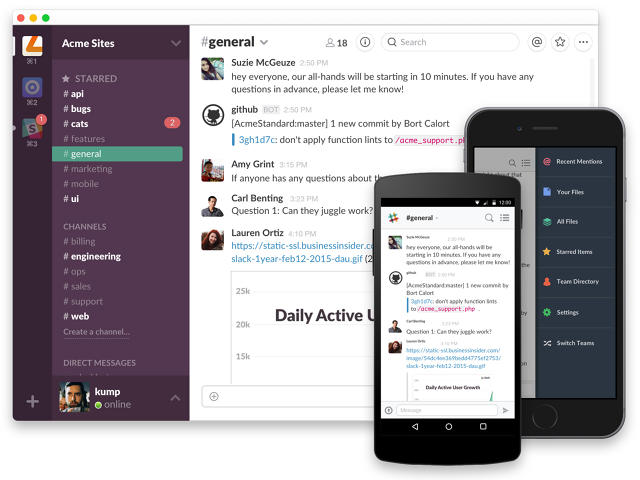
As part of the sale, Butterfield turned into a Yahoo employee—a 3-year ordeal that proved instructive. “It used to be mind-blowing,” Butterfield says. “I’d by no means worked in an important firm. the entire device was once bad. The payroll, time-monitoring, advantages, intranet, even the 401(okay) was designed in a weirdly dangerous means.” Butterfield in the end stop to launch some other sport, called Glitch. It, too, went nowhere. however once they were growing the game, he and his crew of programmers had come up with a groovy solution to collaborate on their company’s little network. Seeing the prospect to create a work atmosphere that was once a million instances better than what he had suffered through at Yahoo, Butterfield remodeled that program into what would develop into Slack. the brand new company launched in December 2012, with a complete staff of simply eight folks.
From the beginning, Butterfield designed Slack for finish customers like himself, reasonably than first considering the needs of corporations or the demands of IT managers, which is how most endeavor device is created. in consequence, Slack—unlike predecessors corresponding to HipChat and Yammer—is a triumph of humane considering.

“We’re truly acutely aware of solving issues in a way that doesn’t fetishize the purity of UI design at the price of the user,” says Slack’s design director, Brandon Velestuk, who has labored carefully with Butterfield on account that becoming a member of Slack in 2014. “There used to be all the time an figuring out that this was once a device people have been going to spend their entire day in, so we sought to bring an empathy to the design.”
Slack’s in-app communications are supposed to make stronger the theory it’s designed for you, a standard individual, by means of other customary folks. whilst you log in for the primary time, a dialog box pops up to say, “hey. thanks for signing up for Slack. We’re really satisfied to have you ever!” in the morning, you might be greeted with lovable little phrases equivalent to, “Please enjoy Slack responsibly.”
“Slack’s tone would possibly no longer be a merit for each more or less firm,” Butterfield acknowledges. “however even people who work in probably the most boring elements of the most boring accounting companies are still human beings. a few of them nonetheless go dwelling and smoke weed, for example—no longer that smoking weed is the hallmark of humanity.”
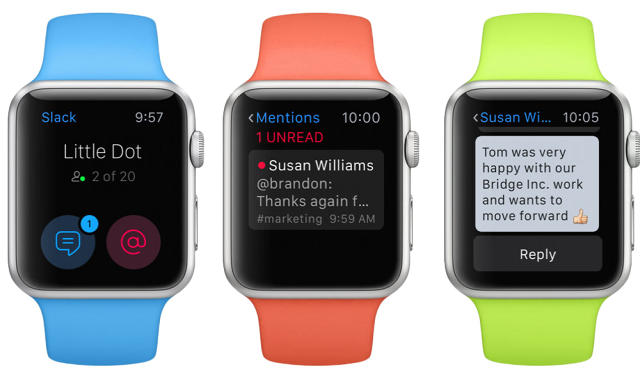
It’s a voice that sounds, not coincidentally, rather a lot like Butterfield’s. “I used to respond to every tweet myself,” he says. “That tone was established with the aid of, oh, 15,000 tweets. There’s a very particular situation we wish to be in people’s minds: no longer too boring and stodgy, but by no means slapstick. we want it to be relatable—genuine, respectful. one in all my favourite tweets—one thing we’ll do every once in a while—is, ‘absolutely!’ with the exclamation mark.” He laughs, but there’s a touch of satisfaction now not a ways from the outside. “I imagine that my masterpiece.”
That approach helps provide an explanation for why at many companies Slack has been offered now not by using IT managers, but by using regular employees who have heard about the software from chums or have used it elsewhere. Slack came to Zappos, as an example, by way of a developer who started the use of it together with his workforce. Seeing how much they loved the experience, collaboration product manager David Fong started rolling it out to someone who wanted it. thus far, about two-thirds of Zappos’s 1,four hundred workers have elected to get Slack on their computer systems. “It feels right to so many people,” Fong says. “Zappos could be very curious about tradition, and Slack is a enjoyable person experience. It’s like, for those who go to work in a colorless, colorless constructing, work can really feel sterile. Slack isn’t sterile.”
as the waiter at Vij’s wraps up our leftover lamb popsicles and vegetable koftes for Butterfield to take house, Slack’s CEO is laying out his ambitious plans for his company’s future. “changing [Microsoft’s] trade Server because the essential hub the place the entire information flows, i think that’s something we’ll do very neatly,” he says. “We can also be the underside layer of the expertise stack, and make the whole lot else better.” thanks to adoring word-of-mouth and increased media consideration, Slack’s public profile grows daily. Revenues—some companies pay fees of as much as $15 per consumer per thirty days, relying on the level of safety and products and services—are closing in on expenses, and must speed up after Slack introduces a stronger and dear “enterprise” version later this 12 months.
with a purpose to ship on Slack’s potential—and justify that high valuation—Butterfield and Co. must now persuade corporate the usa that it’s actually an critical product. the first step is to merge Slack with every different the most important piece of device on a corporate network. Slack is within the process of making integrations for a slew of products from a wide range of third-celebration providers. Twitter, field, Dropbox, Stripe, and Google products reminiscent of drive and Calendar are already built-in, together with dozens of other apps. One particular workplace favourite is Giphy, which lets customers publish random GIFs into conversations (attempt to find that on your Outlook). in line with Butterfield, more than 400 corporations are waiting for Slack to combine their purposes.
still, Slack has to clear some main hurdles prior to it could turn out to be a truly important participant, and getting old-line companies on board is going to be difficult. the company’s early consumer base has primarily been startups and media companies, which tend to have more effective buildings and, crucially, much less-stringent safety standards—an enormous space of situation for corporations of great scale. while Zappos’s Fong loves Slack, he gained’t permit it for use for the rest that’s consumer-related or monetary. That wariness used to be reflected by other IT managers I spoke with, most of whom rely on Microsoft products. “i admire Slack’s ease of use; I like the file sharing and the searchability,” says the head of technology at one the big apple funding staff. “but in its current format, Slack is not going to seek out traction in a company like ours. As things stand, my affect is of a fuzzy, really feel-just right millennial hipster device somewhat than a buttoned-down, conservative, and justifiable platform.” whereas he’s open to reexamining Slack one day, he’s skeptical. “nobody ever acquired fired from an IT department for buying from Redmond,” he says. Ask Microsoft about Butterfield’s ambitions and the response is diplomatic however doubtful. “when you’ve got 1 million, 2 million [overall] users, there’s one set of requirements,” says Julia White, GM of product advertising for office at Microsoft. “however then whilst you go big, there’s a complete new set of requirements.” in line with White, one out of each seven folks on the planet makes use of office.

Garnering tens of tens of millions of corporate users as an independent company may be onerous for this and many different causes. but Slack could be a phenomenal takeover target or strategic accomplice for a bigger company. Butterfield swears he isn’t keen on promoting. “M&A usually doesn’t work,” he says, alluding to his experience with Flickr, which, because the Yahoo acquisition, has been overshadowed via more moderen photo products and services like Instagram. “The special tradition is overwhelmed, the p.c. of innovation is slowed.” He also admits that this is exactly what he’d say if he used to be, in reality, trying to promote the company.
whatever happens to Slack, there’s a good chance that Butterfield and Velestuk shall be remembered as the blokes who ultimately vanquished email, which, after twenty years, is starting to feel as stale as pneumatic tubes as soon as did. “I could speak to my youngsters about it and say, ‘well, there used to be this thing known as electronic mail back within the day. I used it quite so much . . . ,’ ” says Velestuk. “that will be pretty good.”
(174)

